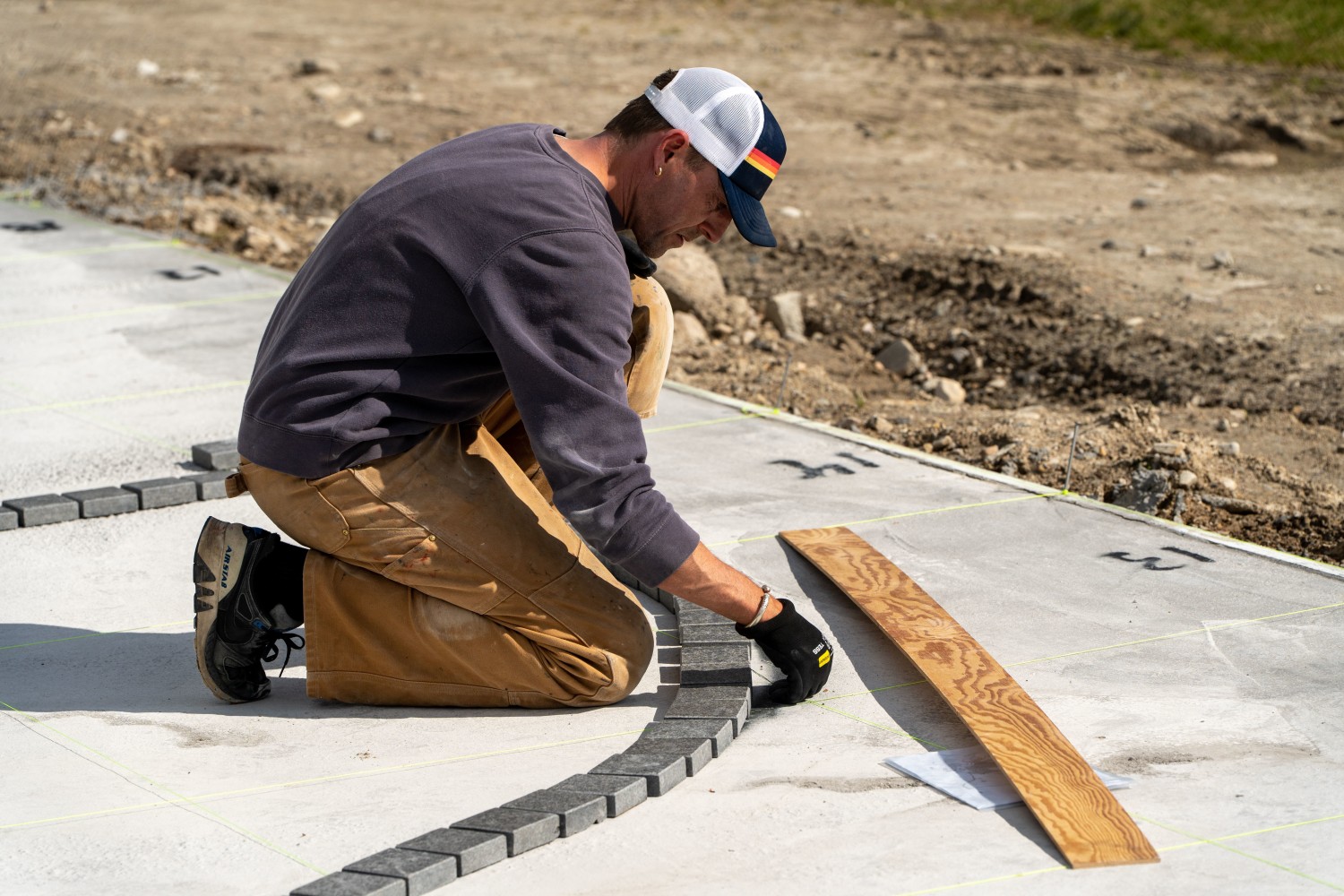
Along County Road 27, several small parking areas provide great views towards the mountains of Rondane. When planning a new public artwork along this road, it was crucial for Norwegian artist
and writer Matias Faldbakken to use an existing space to avoid new encroachments on nature.
"I suggested to make a mosaic at Kjøllen, and in this way turn the rather inconspicuous parking area into an attraction in itself," says Faldbakken. “I wanted to create a large, horizontal picture that you
can stand on while taking in the view. More like a piece of road surface you drive on, than a work to be watched from a distance.”
Made of pale and dark granite and composed of 26,000 pieces of stone, each measuring 10x10 cm, the work is a monumental cobblestone drawing, assembled by professional stonemasons, and
covering an area of 20x13 metres.
“By installing a mosaic in Rondane, we have created an image made in stone; stone returned to the mountain, so to speak. It will be a material image that can withstand nature, and that nature can withstand," the artist explains.
Mosaic as a medium of art goes back thousands of years and is considered one of the oldest art forms in the world. Famous mosaics from Mesopotamia, Greece, Pompeii and Herculaneum, for example, were often floor based works, or pictures meant to be walked on.
"Debtor" is Faldbakken’s drawing of a small wooden bust housed within the collection of the National Museum in Oslo. The bust, which is believed to be a “Head of Christ” from the 12th century, is a motif that Faldbakken has returned to repeatedly in his work.
The title "Debtor" is based on a notion of debt: an assumption that what keeps people in place in a global economic cooperation, may be the notion of — and the feeling of — debt.
"A debtor is someone who owes an obligation; a person with an unsettled debt. The various drawings I have made of the head (of Christ) have been my attempt to create a 'portrait of debt,'" says Matias Faldbakken.